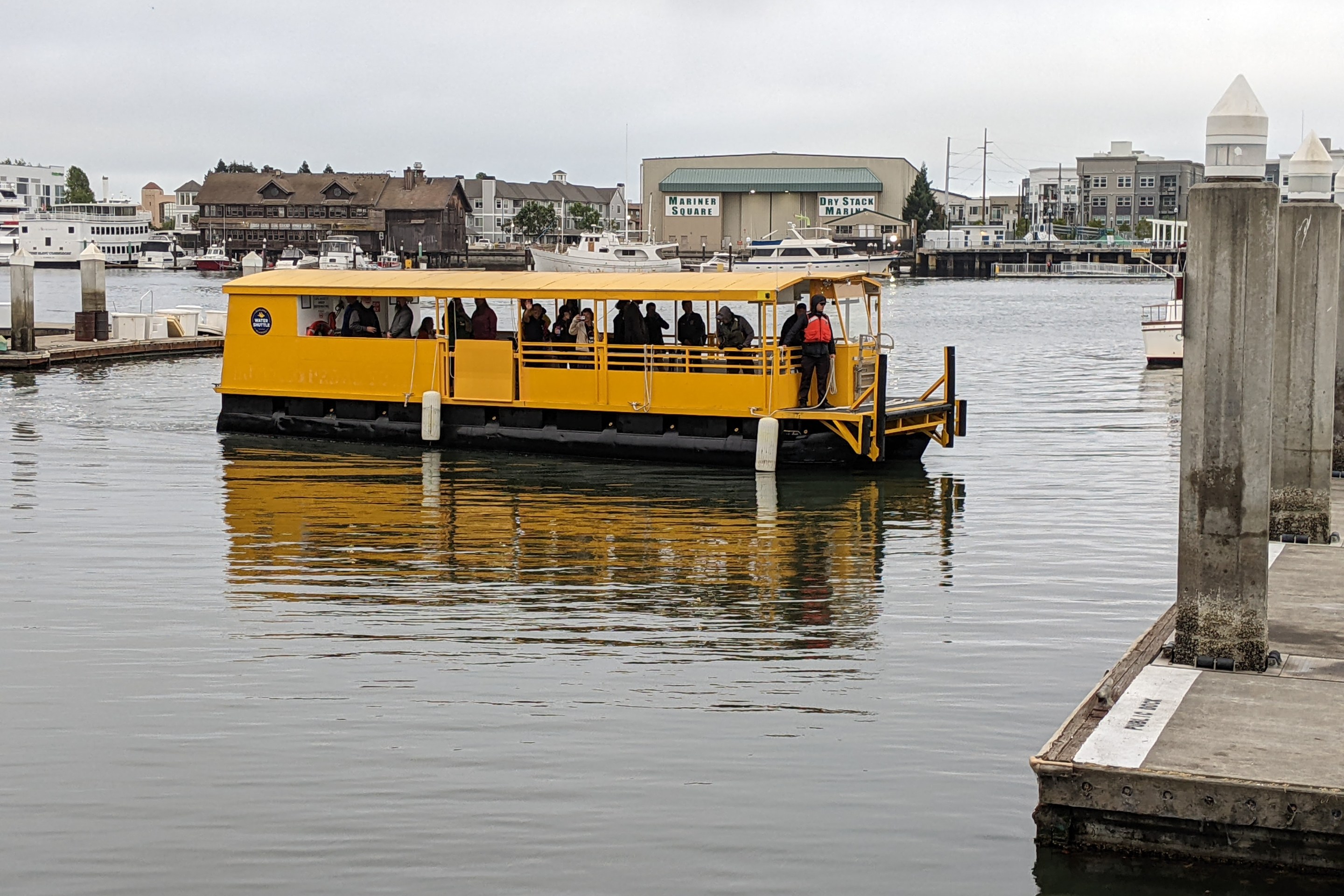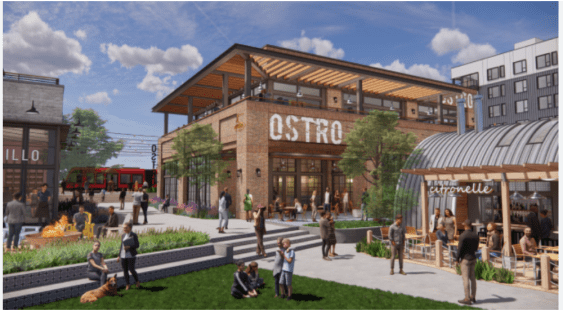 Photo: Thomas Hawk
Photo: Thomas HawkThe San Francisco Board of Supervisors, in their role as commissioners of the San Francisco County Transportation Authority (TA), voted unanimously to approve the TA's enormous on-street parking management study and authorized revisions to pilot Market Street pedestrian and bicycle safety zones.
The TA's on-street parking study had been delayed for two months at Board President David Chiu's request. Supervisors, he said, needed more time to digest its contents, including proposals to extend meter hours and enforcement, expand metered areas to possibly include residential streets bordering commercial districts, to increase the cost of residential parking permits above the current price of administering the program, and to introduce Shoupian parking benefit districts (PBDs).
PBDs would pose interesting governance issues and could strain the relationship between the MTA, the Board of Supervisors and the TA. PBDs, as Chiu and the supervisors envisioned them, would give communities a great deal of leverage in determining how parking would be priced, something that contradicts Proposition A's objective to depoliticize parking by taking specific traffic decisions away from the Board of Supervisors and giving it to the MTA. The MTA theoretically makes parking decisions based on what's best for the overall public, rather than getting bogged down in internecine squabbles over the supply and availability of free parking.
According to Chiu: "The thrust of this study was really to emphasize that there be neighborhood-specific processes set up before there would be parking changes were implemented. If there are increases the study is recommending that additional revenues somehow be farmed back into the neighborhood where those revenues were raised."
MTA spokesperson Judson True evaded a direct answer to whether PBDs would be embraced by the MTA:
I think we're willing to have any discussions that members of the Board of Supervisors want to have about parking revenues. We are committed to doing a better job of communicating where parking revenues go to both the general public and to specific neighborhoods. That, of course, means Muni for the most part and obviously Muni lines go through every neighborhood and every neighborhood has an interest in Muni working well and those revenues are very important to that. We can certainly have conversations moving forward, particularly about new revenue in areas that aren't currently metered, if over the next few years those areas are metered, but those discussions are clearly at a very preliminary stage right now.
To further underscore the roadblocks ahead, Chiu said he was confident the TA was supportive of PBDs, but that he and his colleagues were concerned about garnering support from the MTA
"We unanimously affirmed the study today, but it was important for several of us that the MTA state on the record that they heard our concerns and they would take them into account," said Chiu. "I think that allayed a lot of concerns that I had and that my
constituents had that there would be these parking policies that would just be implemented in a blanket way around the city."
Chiu was also concerned with the effect that raising parking prices and increasing metered parking areas would have on low-income San Franciscans. Since July, Chiu has convened meetings with advocates for "moderate income and low income communities within my district and others" to address the impact to them of increasing parking fees, which he contended might price them out of their neighborhoods.
There are plenty of those residents that have to rely on their cars to get to work and changes of parking policies could have an inadvertent effect of literally pushing them out of neighborhoods. I have made the suggestion that the MTA and the TA consider policies to really take into account the income levels of neighborhood residents to make sure that those specific residents are not pushed out of their neighborhoods. Part of the overall thrust is we want to improve our transit system and make sure that there is an appropriate balance between parking options and public transit options. This I think helps to make sure that whatever final parking policy comes out is consistent with what we need in our neighborhoods.
The solution Chiu has proposed would be to institute variable parking-pricing based not only on time of day and location, but on income level, something akin to the MTA's Muni Lifeline Passes, or discounted monthly passes for low-income riders. Muni Lifeline Passes are administered in coordination with the San Francisco Human Services Agency and are only available to San Franciscans whose income is 200 percent less than the Federal poverty threshold, and therefore many questions remain about who would administer the program, whether or not eligibility would be the same, and how many car owners would actually fit within those requirements. The current study did not analyze such a scenario.
Market Street Safety Zones
Improving safety for pedestrians on Market Street was a much less contentious issue at today's meeting. The TA and MTA agreed to modify the scope of their Calm the Safety Zone pilot and agreed to implement the changes in pavement color, street design markings and signage on Market Street at 4th and 5th Streets. Tim Papandreou, MTA Deputy Director for Planning, said there was
agreement among the transportation agencies and majority support among
Market Street stakeholders for the high-visibility safety zone pilots,
which the MTA would implement in two phases, and in coordination with
Mayor Gavin Newsom's announcement of larger changes along Market Street.
Under the revised pilot, the MTA would use "frappuccino" colored pavement markings at those two intersections instead of brick red, and would add large "10 MPH" markings, bicycle chevron "sharrows" and 10 foot advance stop bars that would keep cars further back of pedestrians. Though the MTA stopped short of pledging to add full bike boxes, the advance stop bars would likely become default bike boxes as cyclists used them. Papandreou said they had chosen 4th and 5th streets because they see the highest pedestrian traffic of all the intersections on Market Street and some of the highest pedestrian volumes anywhere in the city. Papandreou hoped to have the pavement markings and colored segments on the street before Christmas.




